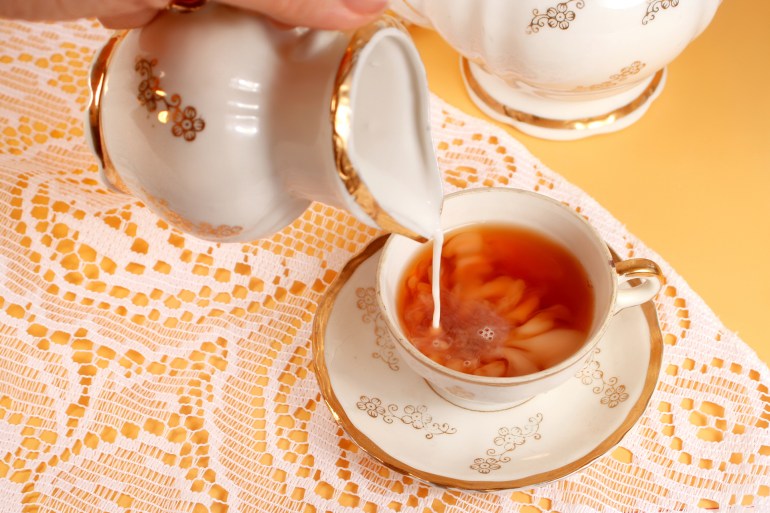Milk tea is a hot drink loved by millions of people around the world, until it became a popular ritual and a daily habit that has been going on for centuries until today, before American coffee invaded the early morning hours during the past few decades.
Precious ceramic mugs
The beginning of adding milk to tea cups dates back to Britain, specifically in the 17th and 18th centuries, since the time of preparing tea in pots.
Hot tea was a big problem at the time, as people tended to drink it in china cups that couldn't stand the heat of very hot boiling tea, and then cracked.
Most people centuries ago could not afford expensive fine china (Getty Images)
Precious ceramic mugs
However, most people could not afford the expensive fine china, and those ceramic mugs could not stand the heat of very hot boiling tea. It was natural for the precious mugs to crack due to the boiling heat, and the solution was to add a cold drink to reduce the heat. tea.
Therefore, the British began to use the trick of pouring cold milk first into the ceramic cup, then adding the tea, so that the mixture becomes hot but not to the point of breaking and cracking the cups, but the milk also added another advantage, which is the delicious rich taste that reduces the bitterness of the tea and does not require much Sugar.
And unlike many peoples who add tea first in a large amount, and then add a little milk, the British add milk equally with tea, except that you have a desire to reduce or increase any of them than the other, but at that time the quantities of milk compared to tea indicated that The physical and social level of a person.
Tea was also incredibly valuable at the time, so families who could not afford large amounts added a lot of milk and a little tea, while well-to-do families tended to do the opposite.
other reasons
British grandmothers and housewives have an additional opinion about adding milk to tea. In addition to reducing the bitterness, because milk contains natural sugar in a large proportion, milk reduces the stains that tea causes to appear in ceramic cups.
We must always remember that 4 centuries ago, dish detergents and cups that dissolved stains and fat were not available, as they are now.
With the treatment of ceramic cups in recent years, they have become tolerant of hot drinks, but millions are accustomed to drinking milk tea (Getty Images)
history speaks
The British are credited with being the first to add milk to tea, as tea arrived in Britain in 1660, but in 1655 a Dutch traveler named Jan Neuhof tested tea with milk at a banquet hosted by the Chinese Emperor Shunzi in Canton.
In 1680, Madame de la Sabliere served milk tea at her famous Salon in Paris.
It is historically attributed to the introduction of this custom to Europe.
While the Tibetans have used butter to flavor their tea since before the 10th century.
However, this is related to the weather and the diet that suits these peoples, and the lack of availability of certain foods within the region.
Quality improvement
It is also believed that the poor quality of tea, at that time, needed to be flavored with milk, which made it creamy and smooth.
Scientifically speaking, black tea contains oxalic acid.
This acid can disrupt the flow of calcium in the body.
Adding milk to black tea helps increase calcium in the body and disables the effect of oxalic acid.
Labor reasons
But the most unusual reason for adding milk to tea was that business owners and factories were serving tea to British workers in breaks, and because hot tea alone took so long to cool down and workers could drink it, cheap milk was added to tea to shorten the break and save cost tea and increase working time.

